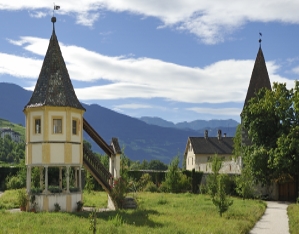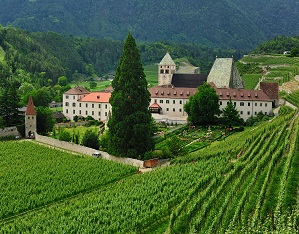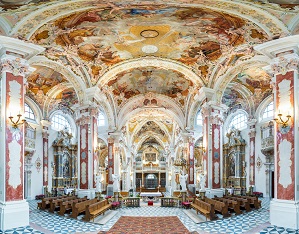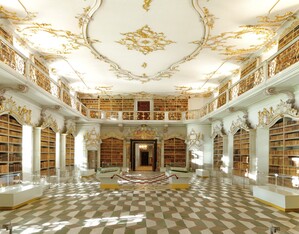This Augustinian abbey, one that was very important in the Middle Ages, is a place of both tranquility and agricultural production; it also houses art treasures and pleasant gardens in which traditional medicinal herbs blend with multicoloured blooms.
This impressive abbey complex, founded in 1142 at the gates of Bressanone, features a historic garden of around one hectare in size. It reopened to the public in 2004, after painstaking restoration by the Superintendence of Bolzano. The south-facing garden is bordered on one side by the monastery’s north facade, and on the other three sides by perimeter walls, protecting the space from harsh weather conditions. Without doubt, the complex had a vegetable garden from its earliest days, but no trace of it exists today. The current arrangement dates back to the 17th century when, after a period of decline, the abbey was enlarged and adapted to the new Baroque style. An enormous sequoia and two Ginkgo biloba trees mark the entrance to the garden, which is divided into three sloping terraces: a formal portion with flowerbeds bordered by boxwood and mixtures of crop and ornamental plants, in the Renaissance tradition, divided by avenues along which two fountains with overlapping pools are to be found; separated by a latticework pergola of vines is a herb garden in which about 75 different varieties are cultivated, including more familiar species such as St. John’s wort and cerulean fenugreek, and exotic herbs such as lemon grass, melon-scented sage, Mexican mint and tobacco. An orchard of heirloom varieties was planted during renovations. The arched windows on the building facade facing the garden were originally the openings of an orangery. An aviary lies on the far side of the monastery.





